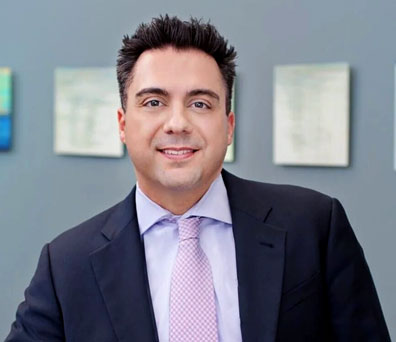Considering Calf Implants?
Here’s What You Need to Know
Here’s a Doctor YOU Should Talk to: Dr. Sean Kelishadi, M.D.
Whether from genetics or simply a lack of exercising one’s legs, calf implants have become increasingly popular in recent years. Calf implants, also known as calf augmentation surgery, are a cosmetic surgical procedure that involves the insertion of silicone implants to enhance the shape and size of the calves. It’s often sought after by people who desire a more defined, toned appearance to their legs. But, you may be surprised to learn that men are the primary demographic undergoing the procedure.
Am I a good candidate for calf augmentation surgery?
The ideal candidate for calf implants is someone who wants a more defined and toned appearance to their calves and has tried other methods to achieve this without success.
Candidates should also have good overall health and be at a stable weight, as significant weight changes can affect the results of the surgery. Individuals with disproportionately small or asymmetrical calves due to genetics or medical conditions such as polio or muscular dystrophy may also be good candidates for calf implants.
What should I expect when getting calf implants?
Calf implants are a relatively straightforward surgery that can be performed under general anesthesia or local anesthesia with sedation. The procedure typically takes about one to two hours to complete, depending on the complexity of the case.
During the procedure, small incisions are made behind the knee or in the crease of the ankle. The implant is then inserted into a pocket created in the calf muscle, either above or below the muscle fascia. Once the implant is in place, the incisions are closed with sutures, and the patient is typically placed in a compression garment to help reduce swelling and aid in the healing process. For those contemplating calf implants, they should be aware that the calf is a sensitive area, and the most common complaint is soreness and pain in the area for several weeks.
Types of calf implants
There are several types of calf implants available, including solid silicone implants, inflatable implants, and anatomically shaped implants. The type of implant used will depend on the patient’s desired outcome, as well as their anatomy and the surgeon’s preference.
Recovery from calf implant surgery typically takes several weeks. During this time, patients will need to avoid strenuous activity and wear a compression garment to help reduce swelling and promote healing. Most patients are able to return to normal activities within four to six weeks following surgery.
Considering Calf Implants? Here’s What You Need to Know
Whether from genetics or simply a lack of exercising one’s legs, calf implants have become increasingly popular in recent years. Calf implants, also known as calf augmentation surgery, are a cosmetic surgical procedure that involves the insertion of silicone implants to enhance the shape and size of the calves. It’s often sought after by people who desire a more defined, toned appearance to their legs. But, you may be surprised to learn that men are the primary demographic undergoing the procedure.
Am I a good candidate for calf augmentation surgery?
The ideal candidate for calf implants is someone who wants a more defined and toned appearance to their calves and has tried other methods to achieve this without success.
Candidates should also have good overall health and be at a stable weight, as significant weight changes can affect the results of the surgery. Individuals with disproportionately small or asymmetrical calves due to genetics or medical conditions such as polio or muscular dystrophy may also be good candidates for calf implants.
What should I expect when getting calf implants?
Calf implants are a relatively straightforward surgery that can be performed under general anesthesia or local anesthesia with sedation. The procedure typically takes about one to two hours to complete, depending on the complexity of the case.
During the procedure, small incisions are made behind the knee or in the crease of the ankle. The implant is then inserted into a pocket created in the calf muscle, either above or below the muscle fascia. Once the implant is in place, the incisions are closed with sutures, and the patient is typically placed in a compression garment to help reduce swelling and aid in the healing process. For those contemplating calf implants, they should be aware that the calf is a sensitive area, and the most common complaint is soreness and pain in the area for several weeks.
Types of calf implants
There are several types of calf implants available, including solid silicone implants, inflatable implants, and anatomically shaped implants. The type of implant used will depend on the patient’s desired outcome, as well as their anatomy and the surgeon’s preference.
Recovery from calf implant surgery typically takes several weeks. During this time, patients will need to avoid strenuous activity and wear a compression garment to help reduce swelling and promote healing. Most patients are able to return to normal activities within four to six weeks following surgery.
What are the risks of calf augmentation surgery?
Like any surgery, getting calf implants involves potential risks, including infection, bleeding, implant rupture, nerve damage, and asymmetry. It’s also worth noting that calf implants aren’t a permanent solution, which means that patients may need to have them replaced or removed at some point in the future. That being said, if you take good care of yourself and follow your surgeon’s instructions, you can expect to enjoy the benefits of your calf implants for a long time to come. In the end, calf implant surgery can be a great way to get more defined and toned-looking calves, so it’s definitely worth considering if you’re unhappy with the appearance of your lower legs.

He currently serves as the president of SSK Plastic Surgery. He earned his medical degree at the
University of Tennessee-Memphis College of Medicine.
Want to learn more about Calf Implants? Here is a bit about what calf implants are and why people do it!
What are calf implants?
Calf implants give your lower legs (your calf muscles) a shapelier and more defined contour. The implants can make your calf muscles
look fuller and more muscular. A plastic surgeon places calf implants through small incisions in the creases in the back of your knees.
What are your calf muscles?
Your calf muscles are part of your musculoskeletal system. They help you flex your feet and rotate your ankles.
They’re the reason you can walk, run and jump.
You can see these muscles in the back part of your lower legs behind your shinbones (tibias). Your calf muscles start at your knees
and extend to the Achilles tendons in your ankles.
Two main muscles make up your calf muscles:
- Your gastrocnemius forms the bulk of your calf muscle. It’s the muscle that gives your calf muscles their shape.
- Your soleus muscle is wide, flat, and sits deeper in the leg. You can’t see this muscle.
If you are interested in calf implants, you should contact Dr. Sean Kelishadi, M.D
If you visit Dr. Keilishadi’s website, you can learn a lot!
LA-Story.com would like to thank Dr. Sean Kelishadi, for taking the time to explain what calf implants are and all the
information about what the procedure is and what a patient needs to expect from this type of surgery!
Stevie Wilson,
LA-Story.com
If you have a question, you can email me at stevie.wilson@LA-Story.com
Disclosure: some of the links on this post might have affiliate links!
It costs you nothing. If you buy something, the brand pays me a small percentage.
Subscribe to RSS headline updates from: http://feeds.feedburner.com/la-story/Bpyd
Powered by FeedBurner
Please respect copyright provisions if you feature content from LA-Story.com, including images, podcasts, videos, and the accompanying text.
We require a notation of content origination (meaning credit tag), a link- back
to the specific page, and please email the link to stevie.wilson@la-story.com before the piece goes live.
LA-Story.com, LA-Story Recessionista, Celebrity Stylescope, Celebrity Style Slam Trademark 2020-2025
Follow Stevie Wilson and LA-Story on these social media channels:
Facebook: https://www.facebook.com/stevie.wilson
Instagram: https://instagram.com/stevie_wilson
Linkedin: https://www.linkedin.com/in/steviewilson
Pinterest: https://www.pinterest.com/lastoryblog/
Twitter: https://twitter.com/LAStory.com
